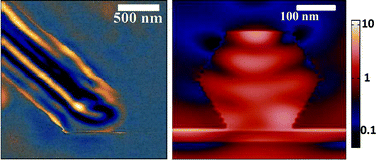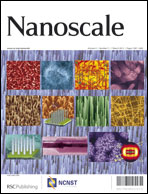Retrieving the spatial distribution of cavity modes in dielectric resonators by near-field imaging and electrodynamics simulations
Abstract
For good performance of photonic devices whose working principle is based on the enhancement of electromagnetic fields obtained by confining light into dielectric resonators with dimensions in the nanometre length scale, a detailed knowledge of the optical mode structure becomes essential. However, this information is usually lacking and can only be indirectly obtained by conventional spectroscopic techniques. Here we unraveled the influence of wire size, incident wavelength, degree of polarization and the presence of a substrate on the optical near fields generated by cavity modes of individual hexagonal ZnO


 Please wait while we load your content...
Please wait while we load your content...